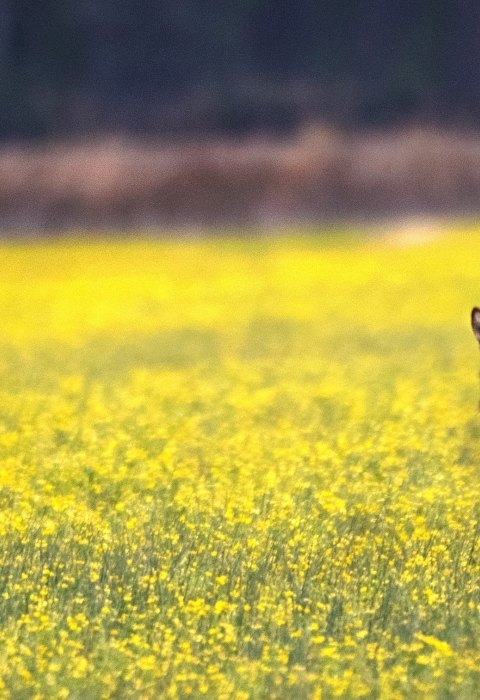ATLANTA, GA - The U.S. Fish and Wildlife Service is releasing the final revision of the Red Wolf Recovery Plan to guide recovery efforts for “America’s Red Wolf.” The original recovery plan for the Red Wolf was approved in 1982 and was revised in 1984 and 1990. The Service published a draft revised recovery plan in September 2022 and is now making the final plan available to the public.
“Conserving our nation’s biodiversity and stemming the tide of the growing extinction crisis is a priority of the Biden-Harris administration,” said Department of the Interior’s Assistant Secretary for Fish and Wildlife and Parks Shannon Estenoz. “This final revised recovery plan will help the conservation and survival of the Red Wolf, ensuring these endangered canids endure in the wild for future generations.”
“The final revised plan underscores the Service’s commitment to working with others to conserve the Red Wolf while also maintaining a rural way of life by working farms and ranches,” said U.S. Fish and Wildlife Service Director Martha Williams. “Successful recovery requires collaboration with all who are involved and interested in Red Wolf recovery, including continued transparent engagement with the community to facilitate a coexistence between people and Red Wolves.”
The final revised plan uses the best available science to chart a path forward for the species within its historic range, with the ultimate goal of recovering the species to the point that protections under the ESA are no longer needed. The plan prioritizes collaborative conservation by engaging stakeholders in management to mitigate threats to the species on the basis of shared understanding and expectations for the species’ recovery. Recovery plans are non-regulatory documents that provide guidance on how best to help recover species. The recovery plan was drafted by the Red Wolf Recovery Team, a collaborative partnership with federal and state agencies, tribal representatives, county government, academia, zoos/conservation centers, non-profit organizations, non-governmental organizations, and landowners.
The only distinct canid species native to the United States, Red Wolves once inhabited a vast region from southern New York to central Texas, including the entire southeastern United States. By the 1970’s, the species had been driven to near extinction due to human persecution and habitat loss. The species was placed on the endangered species list in 1973. In the same year, the Service began developing a captive breeding program to enable future reintroductions to the wild. The first reintroductions occurred at Alligator River National Wildlife Refuge in eastern North Carolina in 1987, establishing the eastern North Carolina Red Wolf Population. This effort was the first time a large carnivore had been declared extinct in the wild and then reintroduced in the United States. It became a model for several subsequent reintroduction efforts.
The Service is working toward a future where Red Wolves coexist with humans in multiple wild, free and viable populations across the historic range where threats are managed through conservation activities, alignment of conservation policy, and public trust and community engagement. Collaborative conservation is foundational to the success of the recovery of America’s Red Wolf and the Service will continue to strive to align our work with the needs of communities and stakeholders involved in Red Wolf recovery.
Today’s announcement comes as the Department celebrates the 50th anniversary of the ESA. The ESA has been highly effective and credited with saving 99% of listed species from extinction. Thus far, more than 100 species of plants and animals have been delisted based on recovery or reclassified from endangered to threatened based on improved conservation status, and hundreds more species are stable or improving thanks to the collaborative actions of Tribes, federal agencies, state and local governments, conservation organizations and private citizens.
For more detailed information on the final revised recovery plan, please visit our Frequently Asked Questions. To learn more about “America’s Red Wolf”, please visit our website and social media sites below:
https://www.fws.gov/project/red-wolf-recovery-program
https://www.facebook.com/redwolfrecoveryprogram
The mission of the U.S. Fish and Wildlife Service is working with others to conserve, protect, and enhance fish, wildlife, plants, and their habitats for the continuing benefit of the American people. For more information on our work and the people who make it happen, visit https://www.fws.gov/program/southeast-region. Connect with us on social media: Facebook, X (formerly known as Twitter), Flickr, and YouTube.
-FWS-




